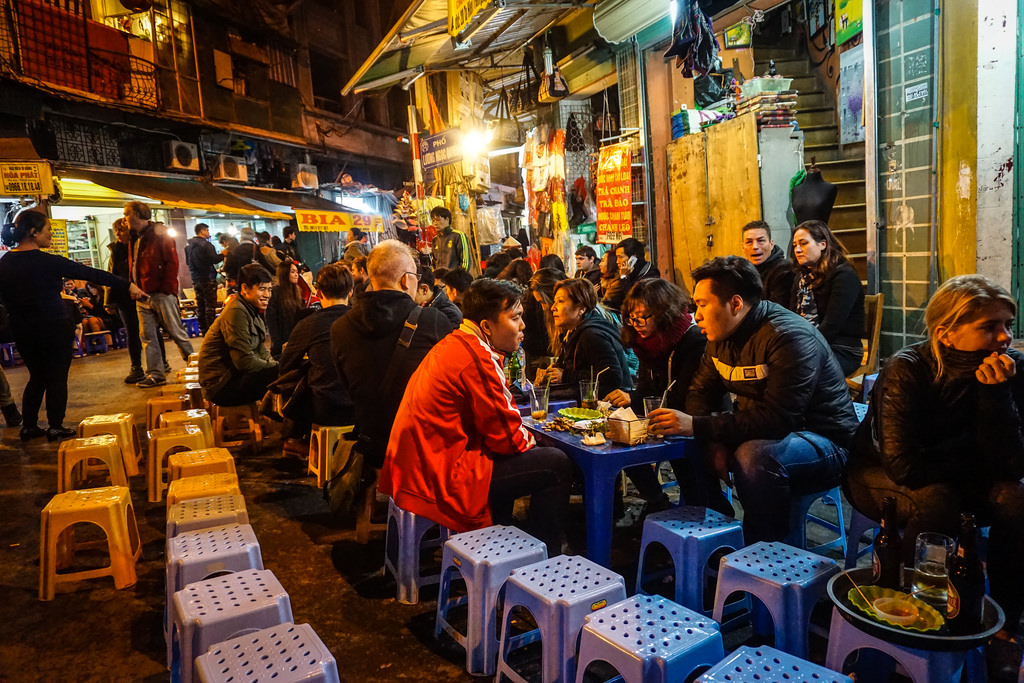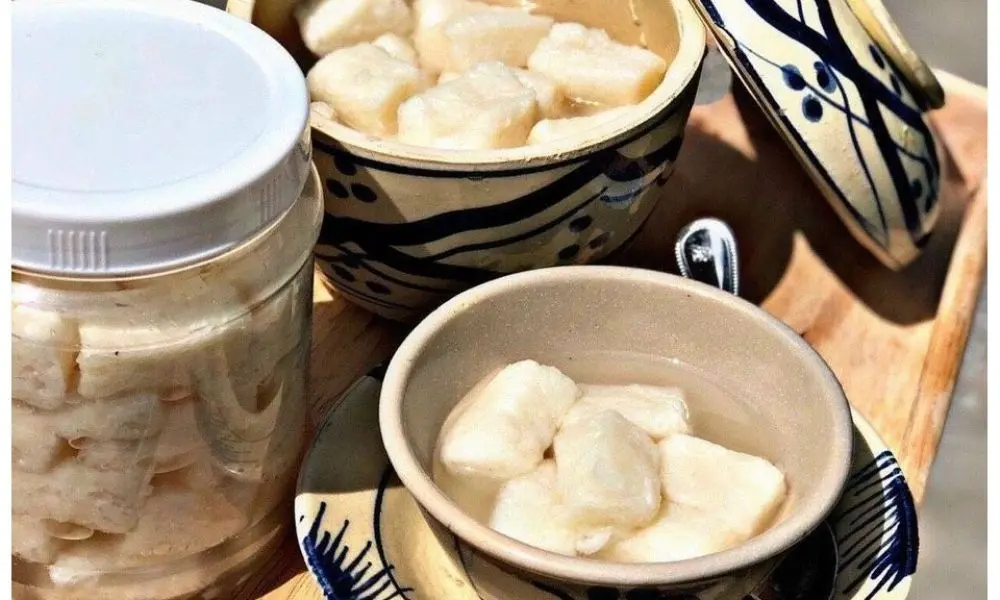At Chapter Dining, fermentation is more than just a technique — it’s a philosophy rooted in sustainability and respect for nature’s cycles. As shared in our previous journal on Chapter fermentation, fermented foods not only enhance flavor but also extend the shelf life of seasonal ingredients, ensuring that nothing goes to waste. In Northern Vietnam, fermented foods have long played a vital role in both daily cooking and cultural heritage. From rural kitchens to refined dishes, fermentation has shaped the region’s signature depth and complexity. Let’s explore the origins of fermented foods in Northern Vietnamese cuisine and why they remain an essential part of every Vietnamese household today.
Table of Contents
The role of fermented foods in Northern Vietnamese Cuisine
Fermented foods have long been a cornerstone of Northern Vietnamese cuisine, deeply woven into both daily meals and cultural memory. Across generations, home kitchens have embraced age-old fermentation techniques.
Such as jars of sour pickled mustard greens (dưa chua). Or the bold, pungent flavors of fermented shrimp paste (mắm tôm). And even traditional rice wine (rượu nếp), which is very popular in the northern mountainous region. These dishes are not just condiments or sides; they’re essential building blocks of flavor that bring tanginess, umami, and depth to the Northern Vietnamese palate.
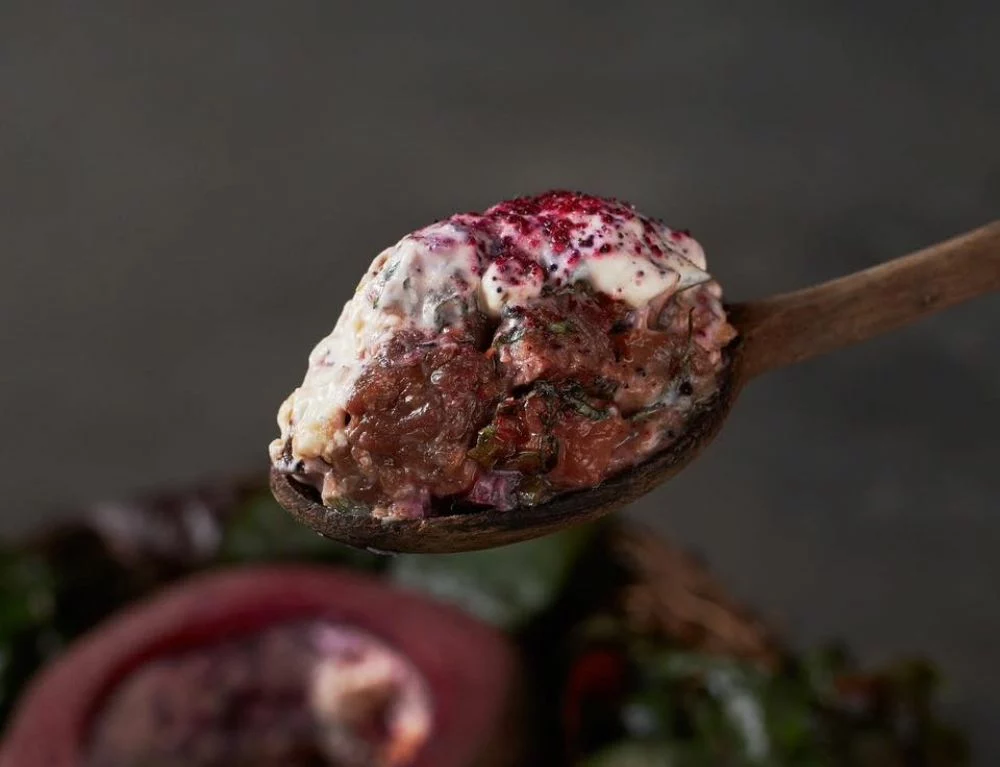
In Vietnam’s tropical climate, where heat and humidity accelerate spoilage, fermentation offered a practical and ingenious way to preserve food. Rather than seeing rapid decomposition as a challenge, early Vietnamese cooks turned it into an opportunity, creating a culinary tradition that celebrates time, patience, and nature’s transformation. Unlike more industrial preservation methods, fermented foods in Northern Vietnam are often homemade, passed down through family recipes, and crafted with care from simple, local ingredients.
Beyond their bold taste profiles, fermented foods also serve a sustainable function. By extending the life of surplus produce and leftover ingredients, they help minimize food waste, a value deeply aligned with the culinary philosophy at Chapter Dining. In many households, preparing fermented dishes is also a meaningful tradition, bringing family members together to connect, share, and preserve not only food but also stories and memories.
Traditional fermented foods in Northern Vietnam
Northern Vietnamese cuisine is known for its balance, depth, and subtlety of flavor, much of which is owed to its long-standing use of fermented foods. Passed down through generations, these ingredients have shaped everyday meals and fine dining alike, offering both complexity and cultural significance.
Mẻ – Fermented rice
One of the most iconic fermented foods in the North of Vietnam, mẻ is a sour rice fermentation traditionally used in dishes like giả cầy (pork cooked with turmeric, galangal, and fermented rice) or om chuối đậu (cooked with banana & tofu stew). With its mellow acidity and earthy aroma, it enhances broths and stews with unmistakable depth. At Chapter Dining, we take this heritage ingredient further, crafting mẻ from Yen Bai purple rice. This native grain, grown in the highlands of Northwestern Vietnam, introduces a delicate nuttiness and vibrant color to the fermentation. A prime example of this craft is our beef served in fermented rice broth — a seasonal dish on the “Sunshine” Chapter menu.
Nước mắm – Fish sauce
No conversation on fermented foods in Vietnam is complete without nước mắm, the deeply savory fish sauce found in every kitchen. While widely available, traditional fish sauce varies significantly by region and technique. Some use whole anchovies, others focus on innards, or even fruit-based versions for vegetarian diets. The fermentation process reduces the strong fishiness, leaving behind a complex, amber-colored liquid with briny sweetness and umami depth. At Chapter, a bowl of carefully sourced nước mắm is often paired with aromatic oil from Tuyen Quang water bug to enhance the fragrance of the dipping sauce in our squid-stuffed bánh cuốn dish.
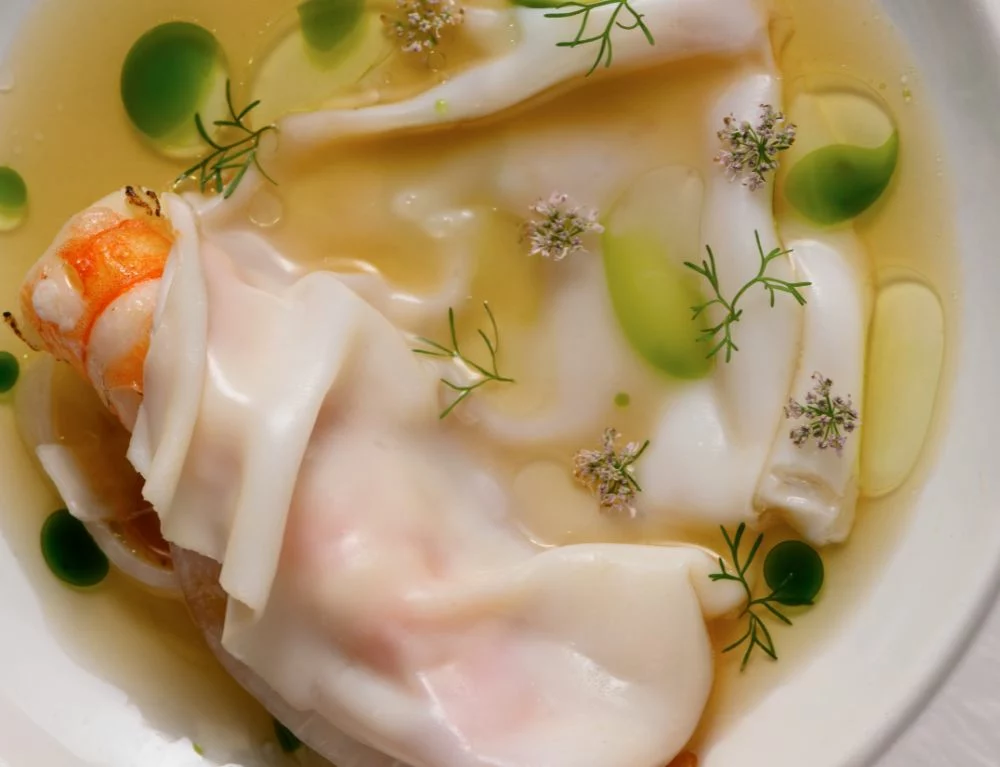
Tương – Fermented Soybean Paste
Tương is Northern Vietnam’s answer to miso — a fermented soybean paste made from sticky rice, soybeans, and salt, left to mature under sunlight. The paste is thick, sweet-savory, and aromatic, developed through a slow natural fermentation process involving beneficial mold cultures. Often used as a dipping sauce or braising base, tương is nostalgic to many who grew up in rural Northern communities.
Chao – Fermented tofu
Creamy, bold, and packed with umami, chao is a fermented tofu commonly enjoyed in Northern Vietnam’s cooler highland areas, especially among the Nùng ethnic group in Bac Ha. Traditionally made by culturing tofu with molds like Actinomucor or Mucor spp., chao develops a pungent aroma and a soft, spreadable texture. At Chapter Dining, our chefs ferment chao for at least a month before blending it with garlic and lemon juice to create a silky, tangy sauce. You’ll find it featured in dishes throughout our seasonal menu, adding richness and character to both plant-based and protein-centered courses.
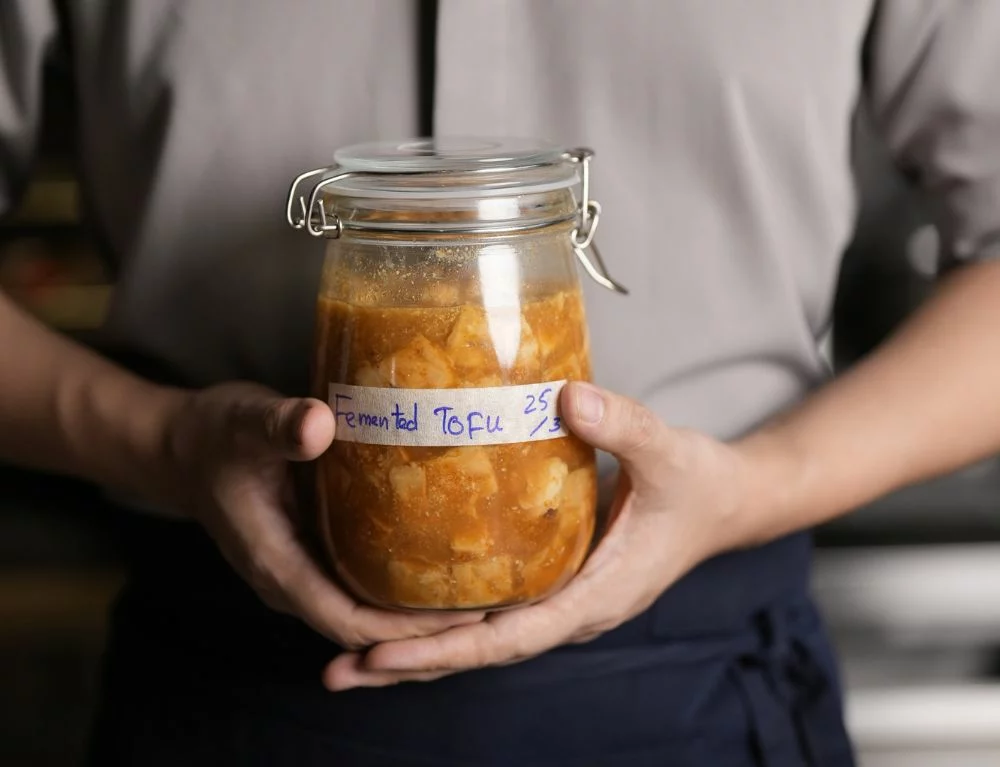
Dưa cải – Fermented mustard greens
A household staple in the North, dưa cải is one of the simplest yet most beloved fermented foods. The greens are salted and left to ferment naturally, developing a crisp texture and a gently sour profile. While often served as a side dish, dưa cải also acts as a base for stir-fries, soups, and stews. This humble pickle, common across street stalls and family kitchens alike, is a quiet hero of Northern comfort food.
Cơm rượu – Fermented rice wine
Rượu nếp is soft, sweet, and slightly tangy. Made by steaming sticky rice, cooling it, then fermenting it with sweet yeast, this dish straddles the line between dessert and beverage. Traditionally eaten during the Vietnamese “Tết Đoan Ngọ” (Mid-year Festival), fermented rice wine is considered both festive and medicinal. For the Sunshine menu, Chapter Dining uses nếp cẩm – the purple sticky rice from Dien Bien – but not for alcoholic pairing. We use it as an ingredient in our pigeon dish. Its subtle sweetness brings a warmth reminiscent of Northern summer sun — the very spirit of our “Sunshine” tasting menu.
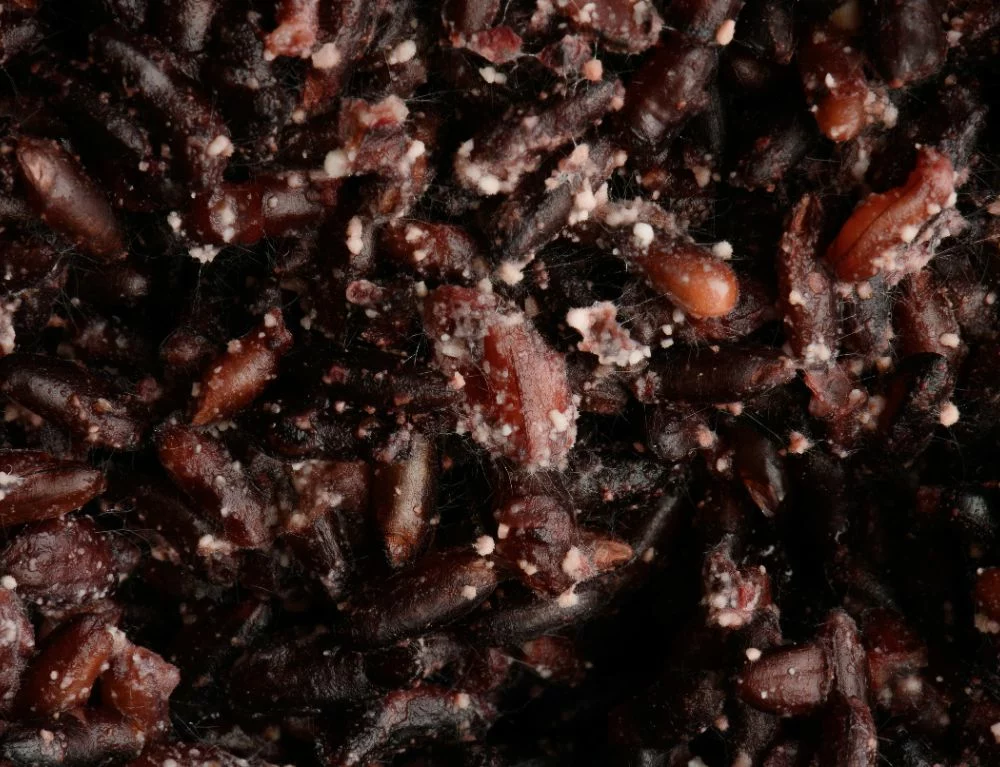
Health benefits of fermented foods
Beyond their cultural and culinary roles, fermented foods offer remarkable health benefits. Fermentation is a natural process that encourages the growth of beneficial bacteria, commonly known as natural probiotics. These microorganisms play a vital role in maintaining gut health by balancing the digestive system’s microbiome. When you consume fermented foods, you’re introducing these helpful bacteria into your digestive tract, supporting smoother digestion and better nutrient breakdown, especially useful when consuming heavier proteins and fiber-rich vegetables.
During fermentation, enzymes are produced that help break down complex nutrients into more digestible forms. This not only makes food easier on the stomach but also enhances the body’s ability to absorb vitamins and minerals. In traditional Vietnamese meals, fermented condiments like mắm tôm (fermented shrimp paste) or nước mắm (fish sauce) are often paired with meat or vegetables to naturally aid digestion.
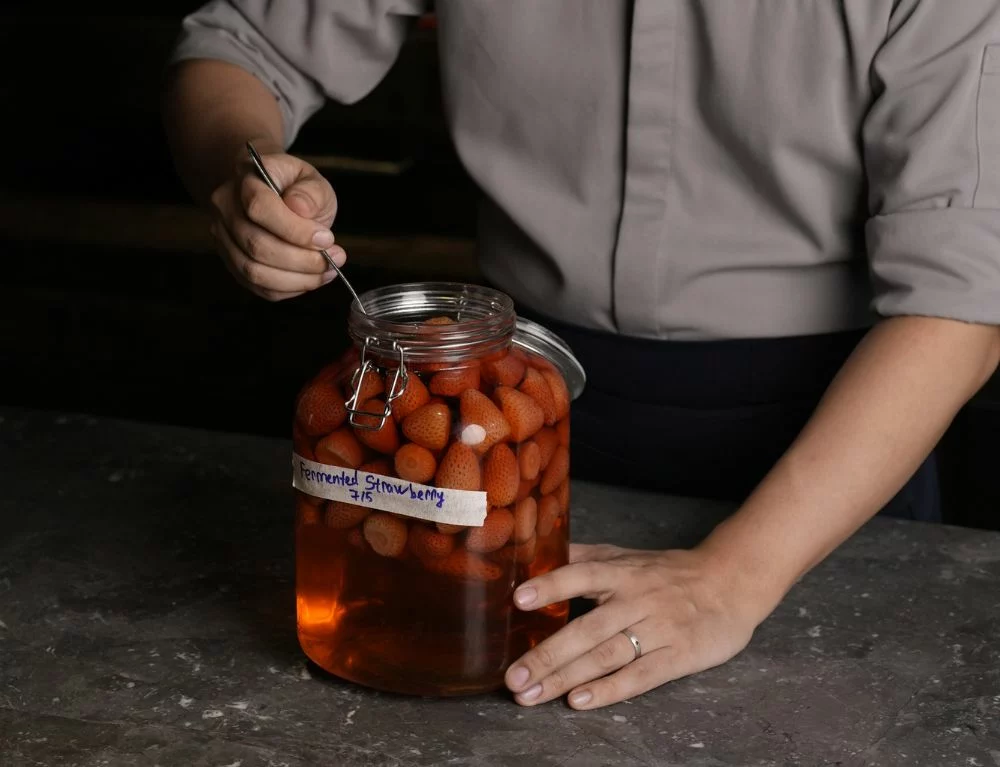
Regular consumption of fermented foods has also been linked to improved immune function. The beneficial bacteria in these foods help the body build a stronger defense system, reducing inflammation and supporting gut-immune balance. Many traditional Vietnamese ferments, such as fish sauce, are rich in essential nutrients like B vitamins (particularly B12), amino acids, and omega-3 fatty acids.
Fermented foods are also a natural way to enhance flavor without additives. One of the greatest culinary values of fermented foods is their ability to amplify flavor without the need for artificial enhancers. Fermentation unlocks deep umami notes, offering complexity and richness that salt alone can’t achieve. So your meal won’t need to rely on MSG or chemical additives.
At Chapter Dining, we also believe that fermentation is a sustainable practice that helps reduce food waste. In Vietnam’s tropical climate, ingredients can spoil quickly, but fermentation extends their shelf life naturally. This allows home cooks and chefs alike to preserve seasonal produce long after its harvest. When entering Chapter Dining, diners will pass by our Fermentation Wall, which is part of our zero-waste approach. We repurpose surplus ingredients to create sauces, broths, or marinades — turning what might otherwise go unused into something delicious and healthful.
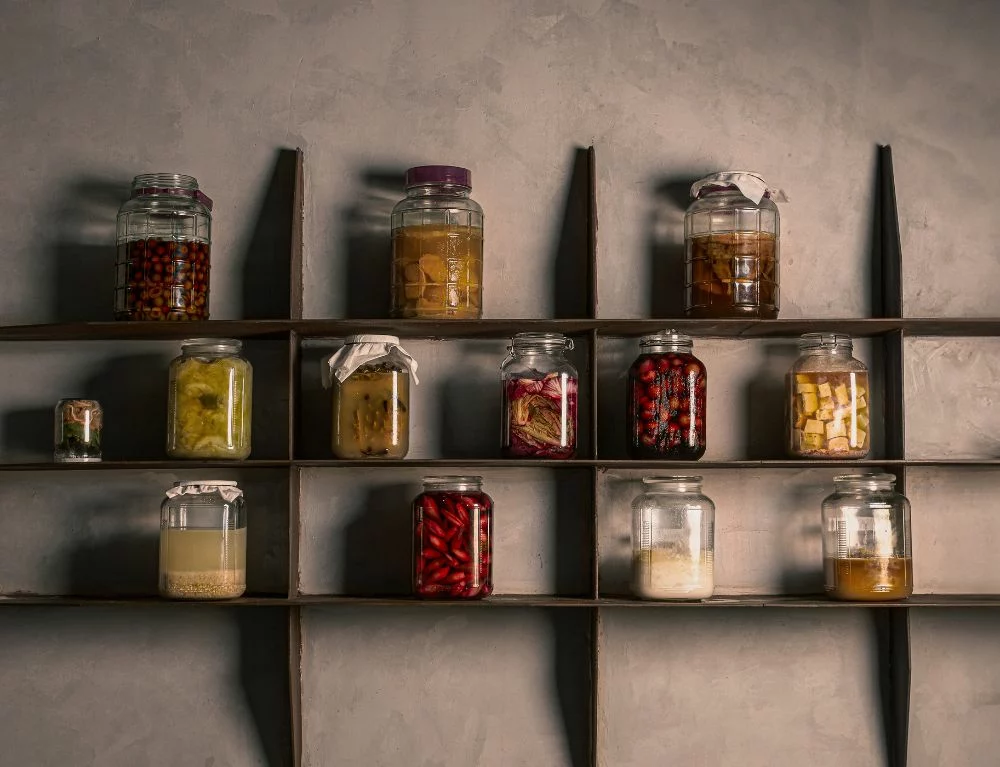
From ancient preservation methods to modern culinary artistry, fermented foods continue to shape the soul of Northern Vietnamese cuisine. More than just a cooking technique, fermentation reflects a way of life, one rooted in balance, sustainability, and deep respect for nature’s rhythms. At Chapter Dining, we honor this heritage by transforming humble ingredients into dishes rich in flavor, nutrition, and purpose. Behind every fermented element lies an untold story of Vietnamese culture, waiting to be uncovered, one bite at a time.



